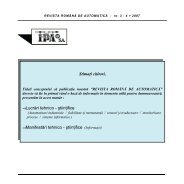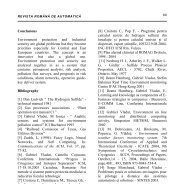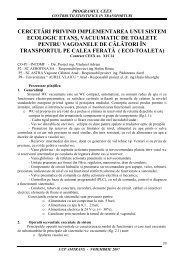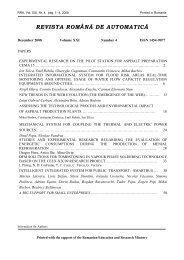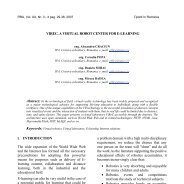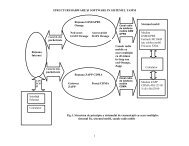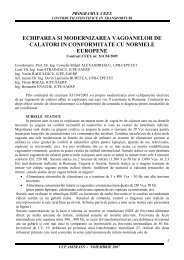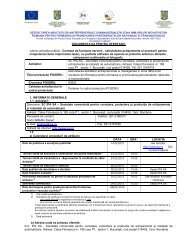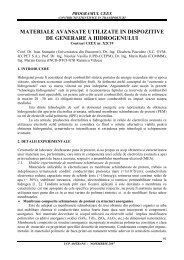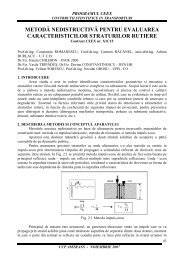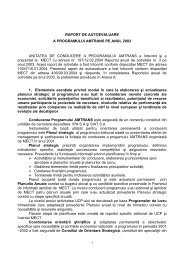0_ CUPRINS - IPA SA
0_ CUPRINS - IPA SA
0_ CUPRINS - IPA SA
Create successful ePaper yourself
Turn your PDF publications into a flip-book with our unique Google optimized e-Paper software.
which impose also reviews on technical rules of construction, zoning and planning and,<br />
secondly, the alignment requirements (harmonized) European standards, based on results of<br />
research conducted in the last decade in the related scientific and technical fields.<br />
4. Zoning of areas and populated centres in order to reduce the effects of<br />
earthquakes<br />
Another necessity for achieving such a development methodology for hazard and risk<br />
maps is that in recent decades, natural disasters, particularly earthquakes, were much more<br />
frequent and destructive, affecting large population concentrations. So far, the international<br />
community's response to the frequent disasters caused by hazards has been mainly focused on<br />
rescue and relief activities of the affected population, actions that in fact, do not solve the<br />
problem, but only improve post disaster situations. In this case, scientists in the field of<br />
seismology intensified theoretical and experimental studies (in situ and in laboratories) for<br />
investigation of natural and anthropogenic causes which have contributed to the occurrence of<br />
losses of lives and property. Thus, the tradition was continued, that immediately after a major<br />
earthquake, to perform inventory and assessment of macro seismic effects, supported through<br />
an international cooperation, which enabled the accumulation of a vast material on how large<br />
earthquakes act on man and environment, on buildings, construction and the surface of the<br />
earth.<br />
From the analysis and processing of information, one have found to be possible to<br />
reduce losses of lives and material goods, by taking all the measures required by the situation,<br />
through the management (supervision and control) of the post-disaster crisis. But the most<br />
important measure of prevention and mitigation of potential future seismic disasters as a<br />
solution is the adoption of modern seismic design made based on seismic hazard maps, valued<br />
at global, regional and local levels.<br />
Among other fundamental concepts of operating the seismic design of civil and<br />
industrial objectives, an important role goes to concepts of seismic hazard, seismic<br />
vulnerability and seismic risk.<br />
4.1. The seismic hazard is independent of human activity and is beyond human<br />
control, being determined only by natural factors, such as produced earthquake magnitude,<br />
epicentre distance, depth of the furnace, the direction towards the fault plane relative to the<br />
point M in which is calculated the hazard, the relationship between rupture length and<br />
magnitude, the maximum possible magnitude of the source, intervals after the earthquakes of<br />
this magnitude can be repeated again, the local geological structure given in point (M).<br />
4.2. The seismic hazard (H) is a function P (Y>y) that describes the possibility that in<br />
a given point (M) and in a time frame (T), the value of the parameter Y (that can be : macro<br />
seismic intensity, acceleration, velocity of displacement of soil) to exceed the given value (y)<br />
as an effect of an earthquake (no matter where its furnace is). The seismic hazard can be<br />
expressed analytically as a family of point functions or graphically by a family of curves<br />
showing the probability of occurrence of different values of the chosen parameter:<br />
H = P (Y > y) (1)<br />
4.3. Seismic vulnerability (V) is a measure of the ratio between the amount of losses<br />
due to damage caused by an earthquake and total (economic and social) value before<br />
producing the damage in a given area.<br />
60



